[PConline evaluation] AMD's previous Polaris graphics card is RX400 series, of which the first with the "D" suffix model RX470D can be described as quite fire, in addition to the mining thing does not say, the graphics card itself is very cost-effective, Therefore it can be said that it has become a classic. And to the RX500 generation, AMD wants to continue the suffix of the D suffix, so it also introduced the RX560D this model, today this is the platinum version of the sapphire from the OC, pricing is less than a thousand dollars, as to how the performance, to see evaluation It.
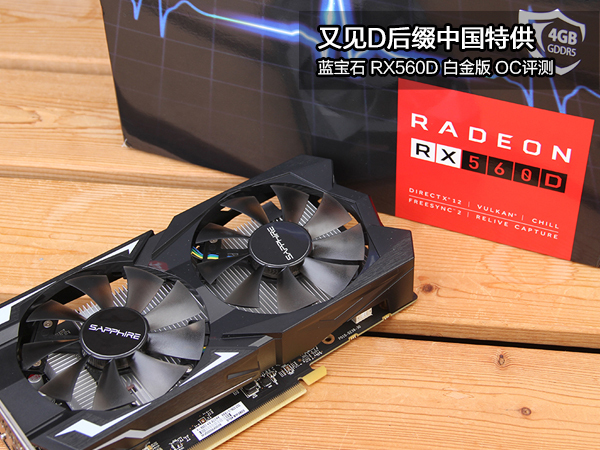
Sapphire RX560D 4G D5 Platinum OC (75W) Image Review Offer Parameter Overview
Out of the box: aluminum fins + smart start and stop double fan no pressure
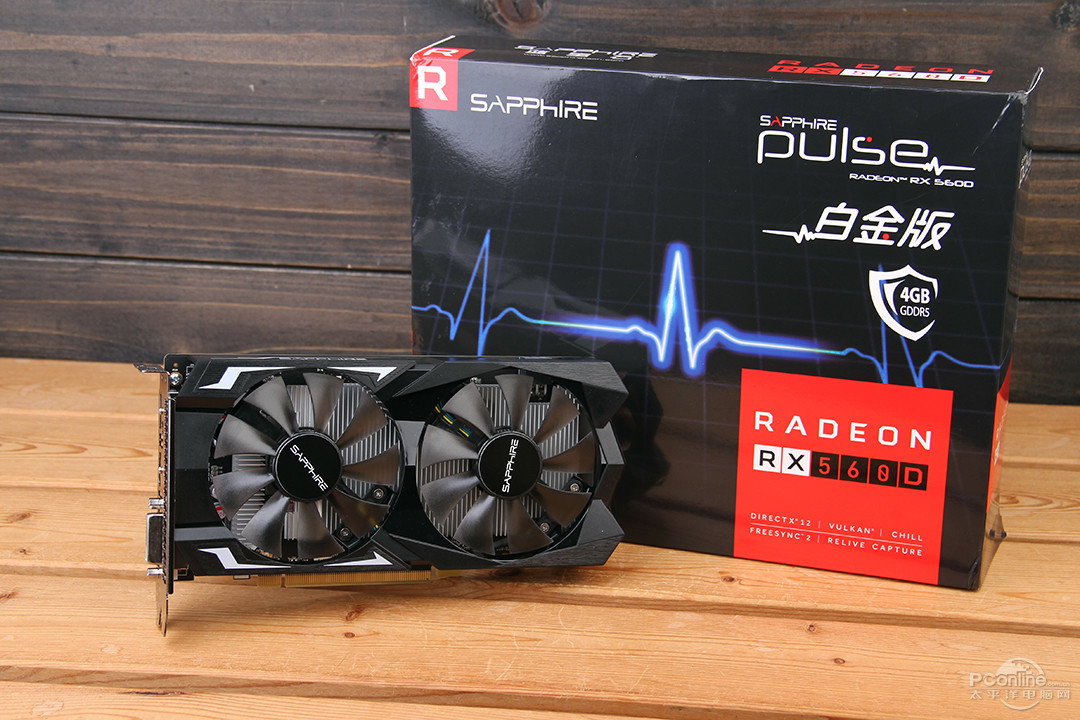
The design style is still the black color of the Sapphire Platinum Edition. It has been used for several generations and has not changed much. However, at a glance it is possible to recognize the design of Sapphire.
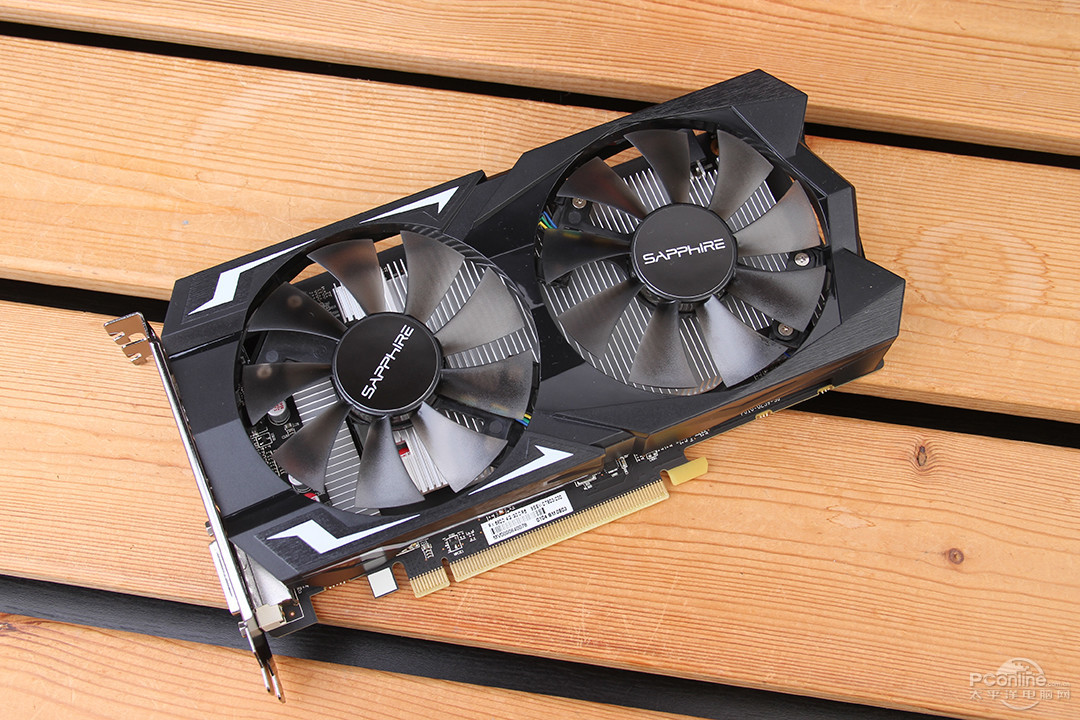
Graphics front
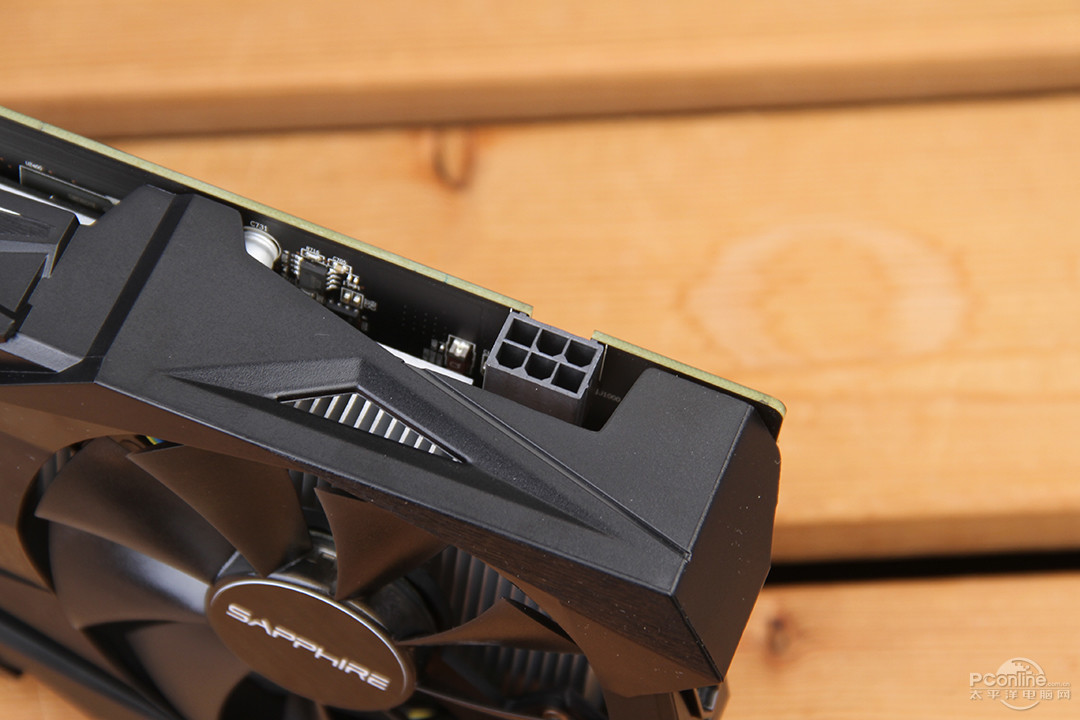
Power interface
RX560D comes standard with 6Pin power supply, power consumption is not high, enough is enough, but also suitable for upgrading the old platform.
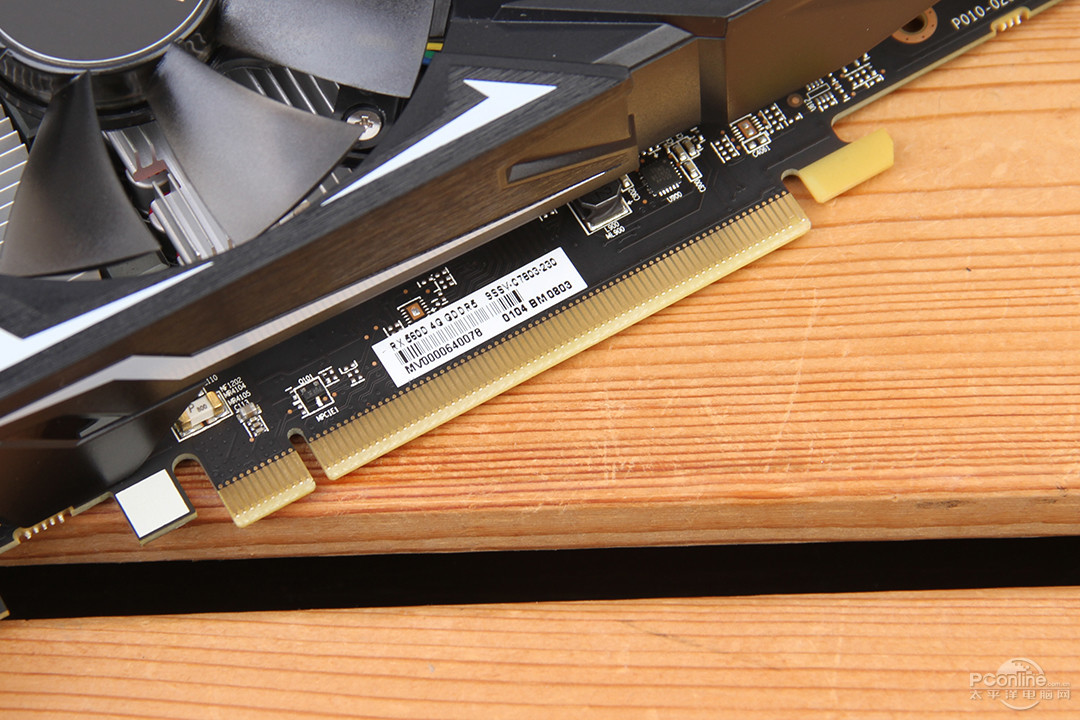
PCIe × 16 Goldfinger
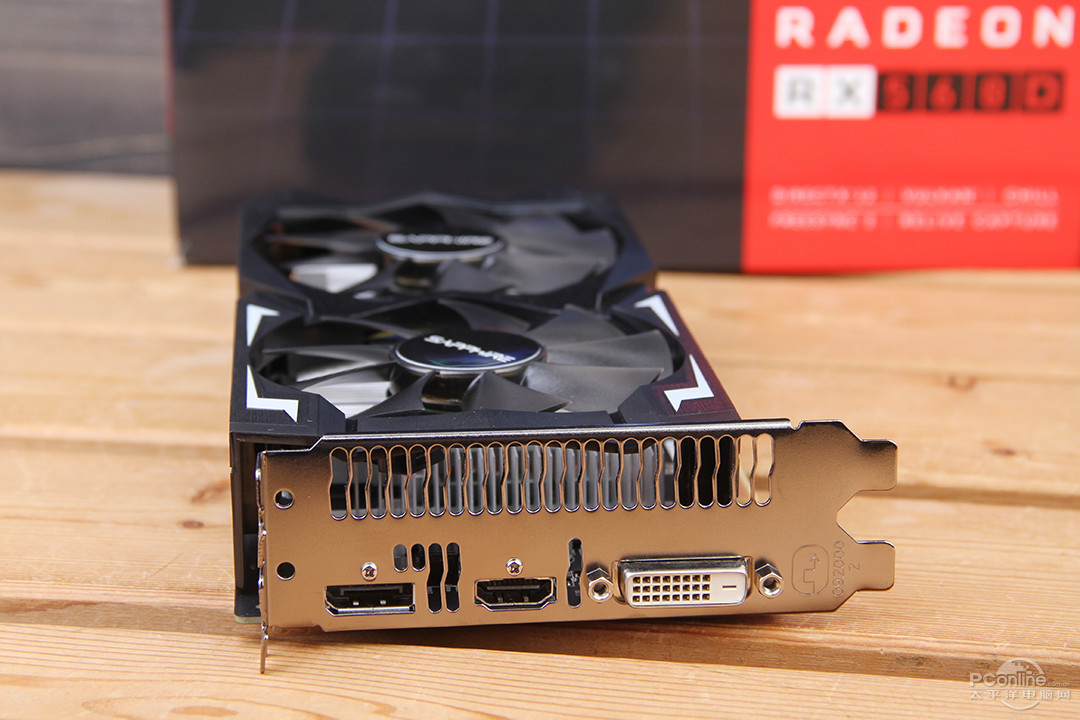
Display output interface
Output interface is flawed, but also the standard level of RX560D, not too much, DP + HDMI + DP, but it has also been able to meet the purchase of this model users, the use of a relatively high probability is DVI and HDMI.
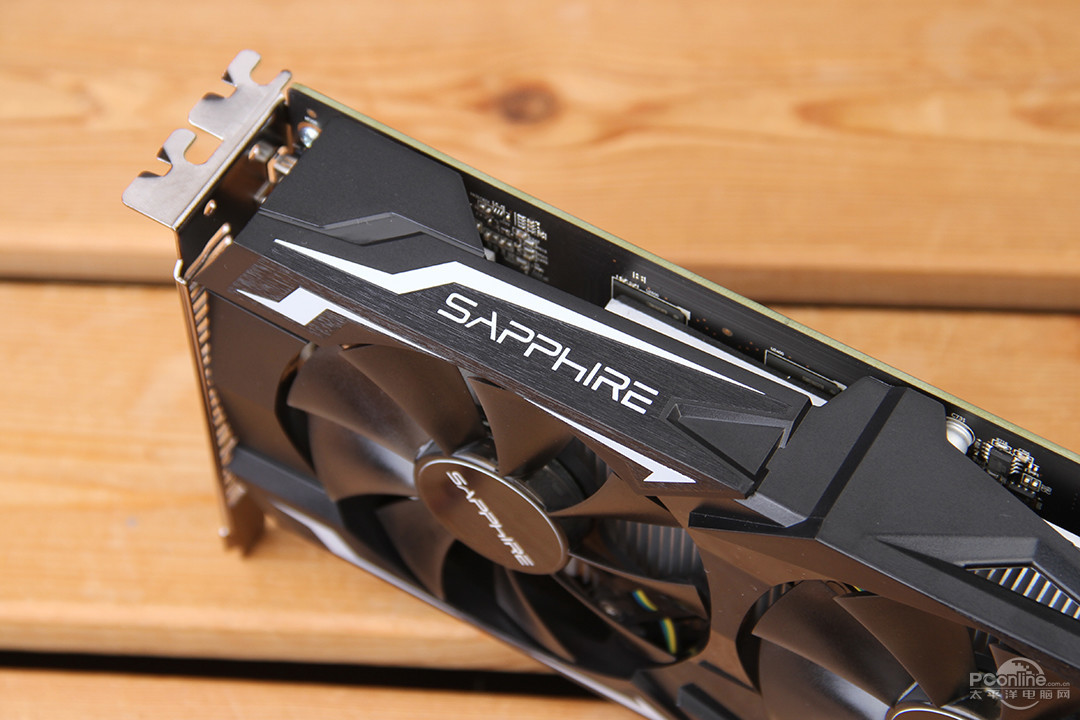
Top SAPPHIRE logo
GPU-Z parameters: slightly higher frequency than the basic version
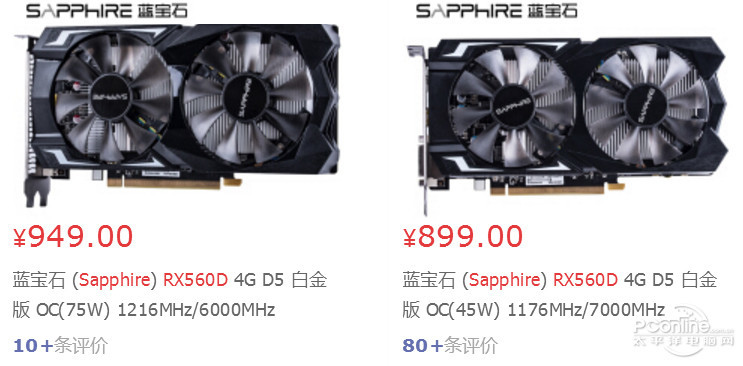
Sapphire's RX560D has two models. One is a 75W model that requires an external 6Pin power supply. The core frequency is 1216MHz and it sells for 949 yuan. The other model is a 45W version without an external power supply. The core frequency is 1176MHz, and the memory frequency is 7000MHz. 899 yuan.
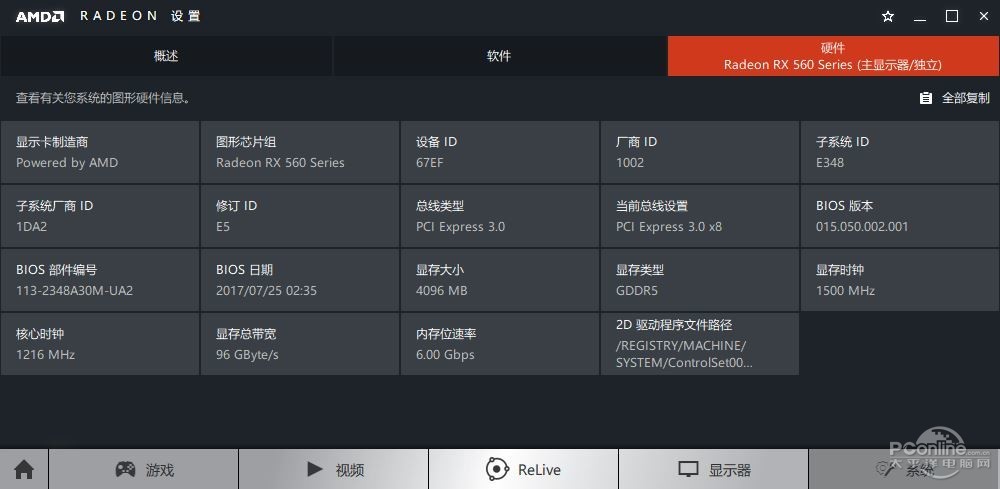
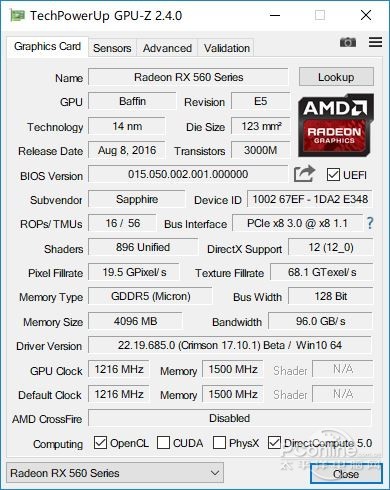
We are in the hands of the 75W version today, the parameters Well, the scale is actually the RX460, but with the updated technology, power consumption may be slightly lower, but after all the frequency is not the same, there is no great comparability.
Sapphire as the top A card brand, workmanship, design, heat since do not have to worry about, as long as the price to force a certain, it is certainly not to sell. However, due to the influence of factors such as the mining tide and raw material price increase, the price of the RX560D has also increased slightly, but in fact the price of the entire graphics card product line has risen, and it is quite helpless.
Dismantling: In fact, it can be made smaller
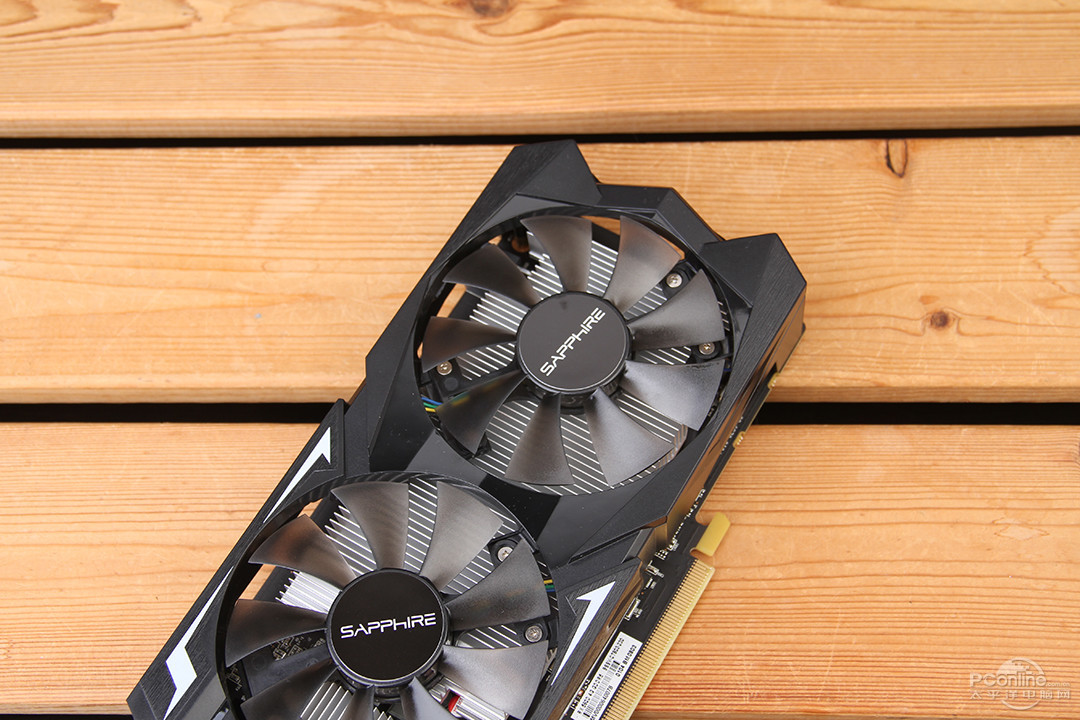
Radiator close-up
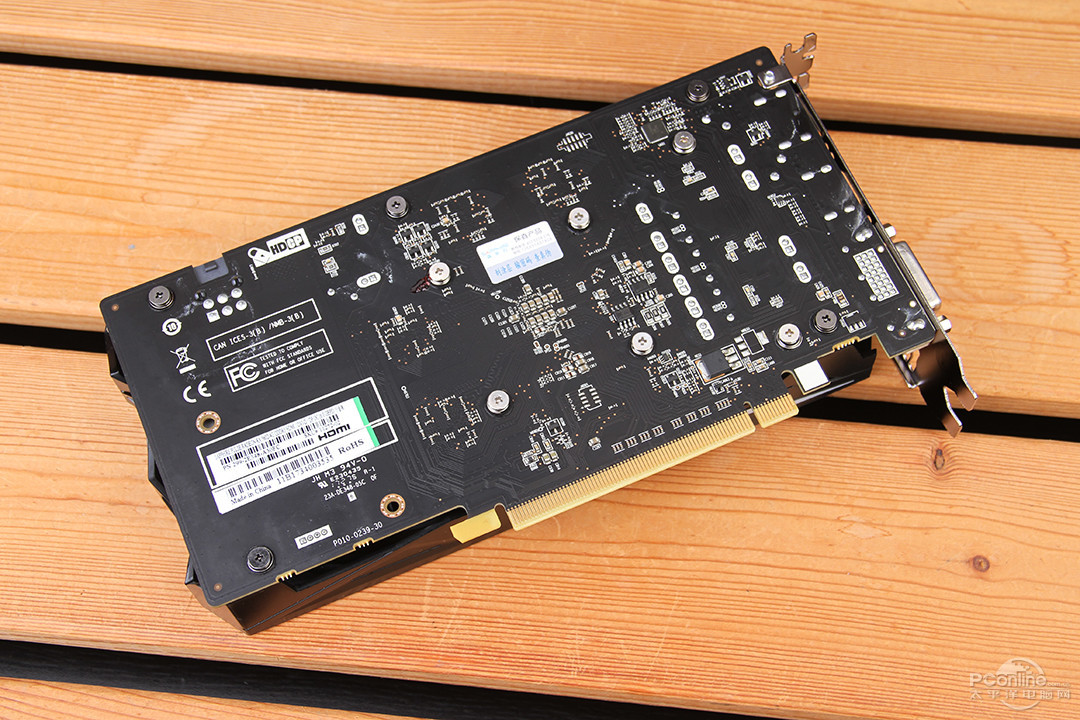
PCB back
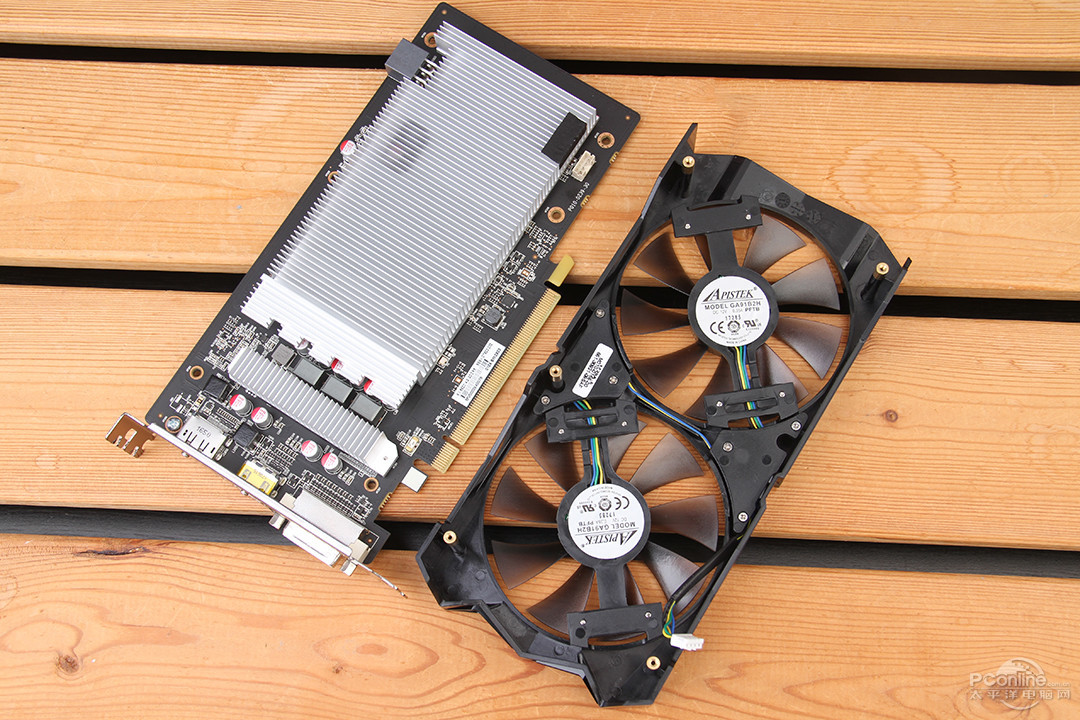
Remove the heat sink
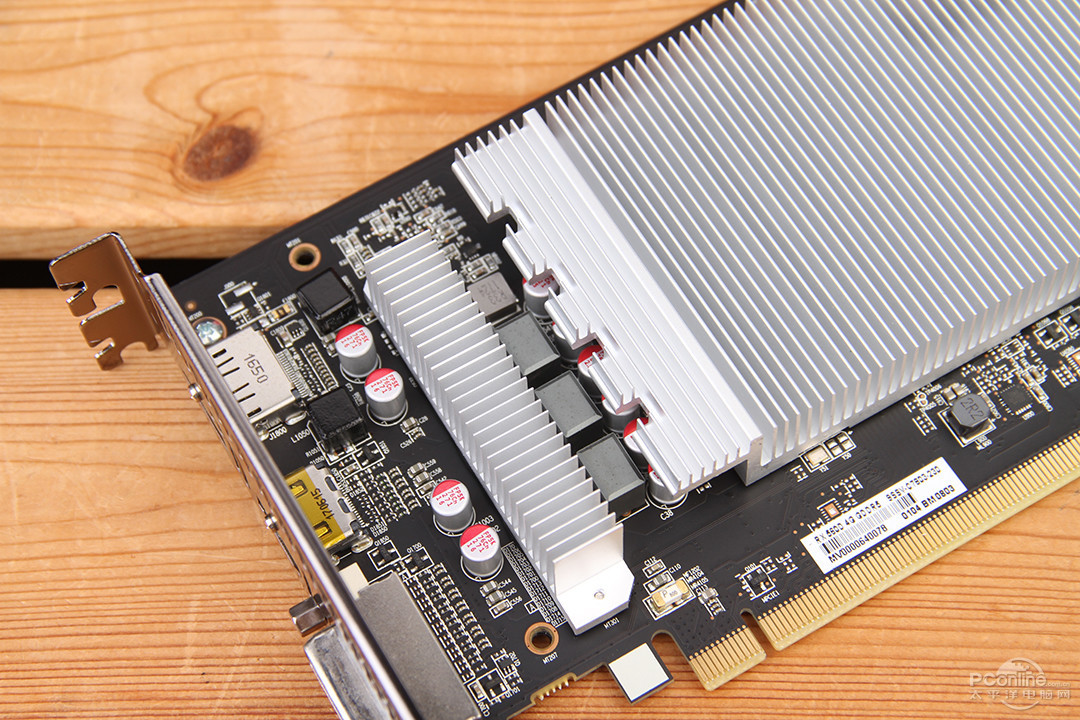
Two large aluminum heat sink fins
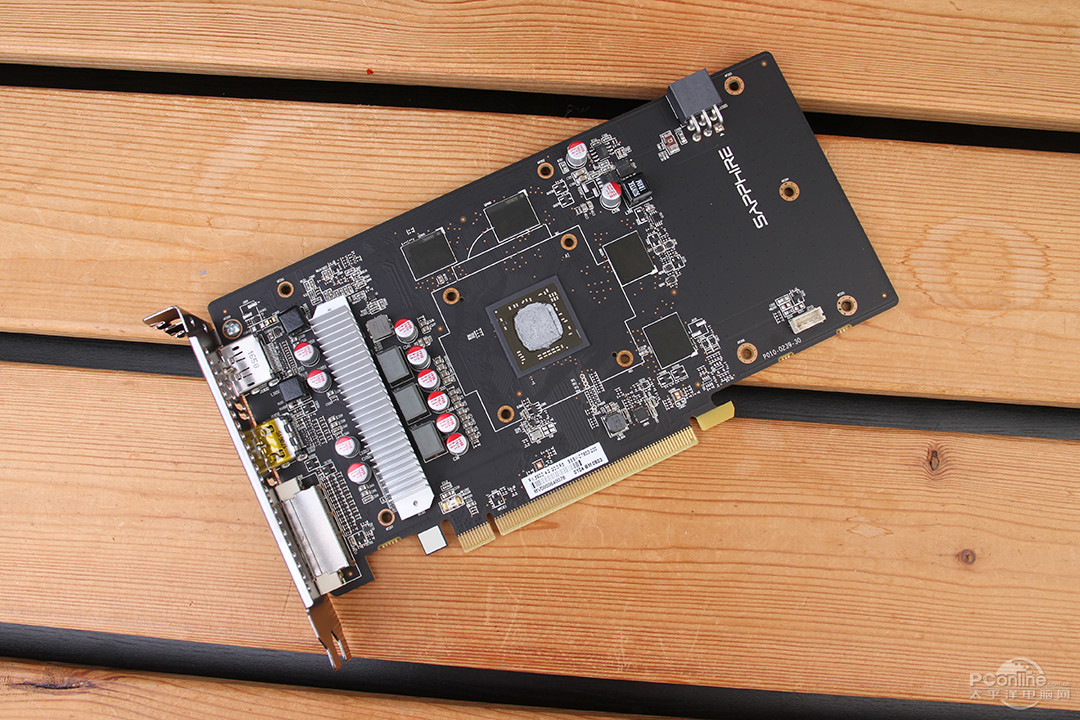
PCB front
You can see that the components on the PCB on the right side of the PCIe golden finger are still sparse. If you want to do short, you can actually do a small card with a PCIe slot width.
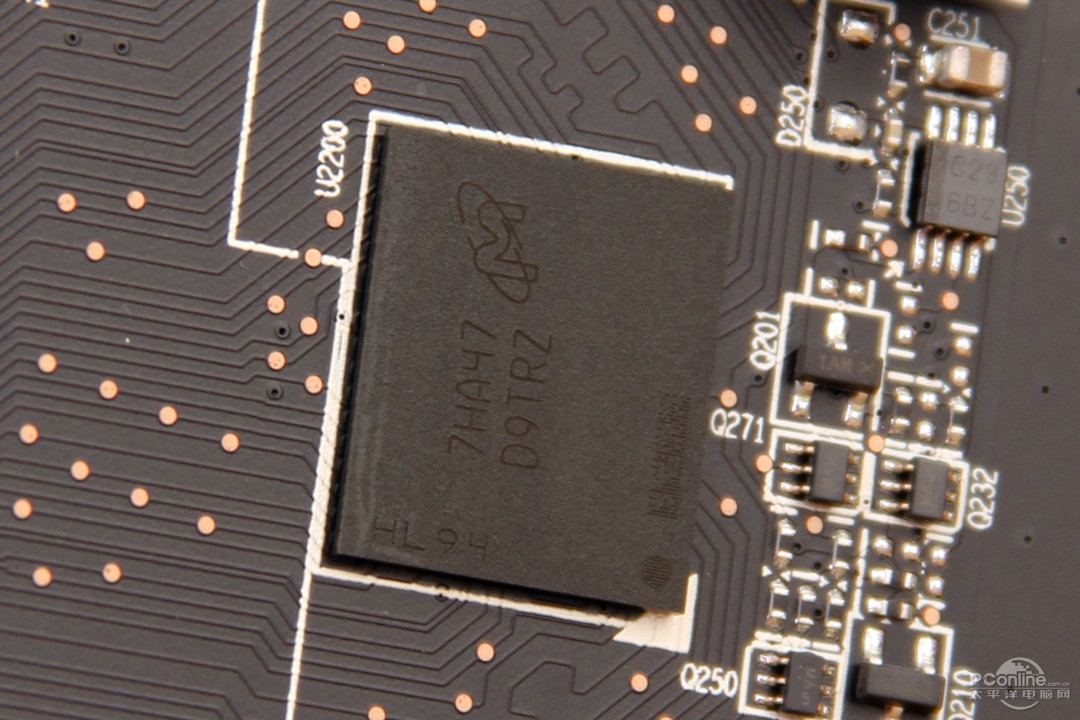
Magnesium GDDR5 memory
RX560D memory bandwidth is 128Bit, 4 pieces of 1GB memory constitute a total of 4GB of memory, for the RX560D such a core is absolutely sufficient.
â— Test platform description
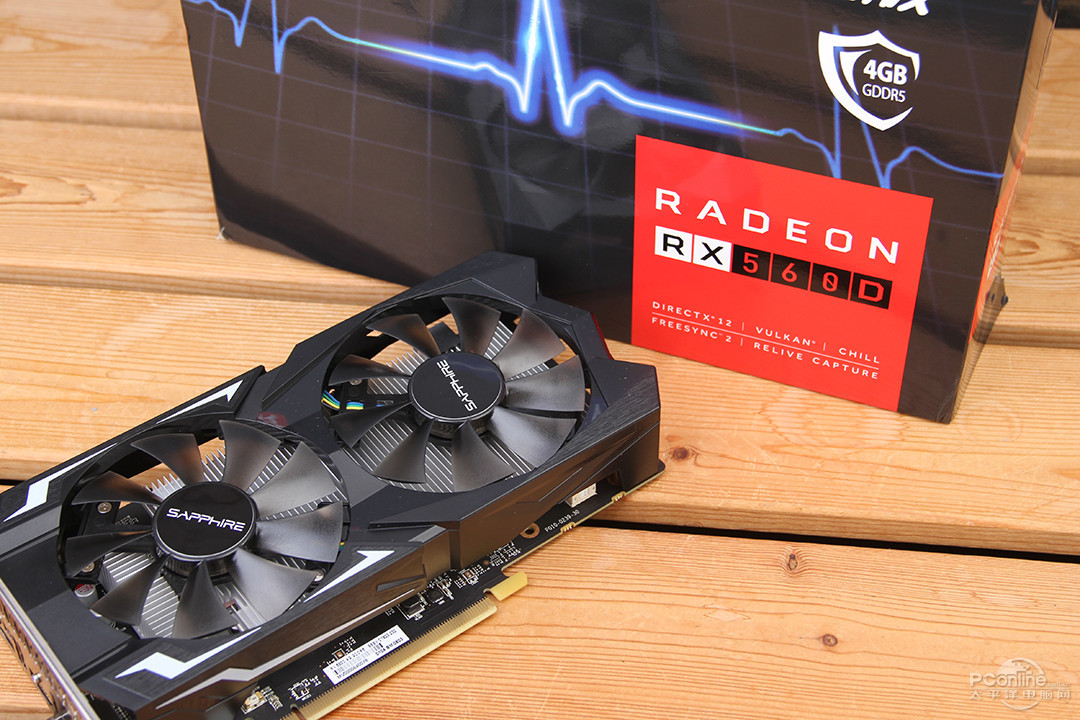
Sapphire RX560D 4G D5 Platinum OC (75W) Image Review Offer Parameter Overview
In order to get closer to the real-life scenarios in the player's daily applications, and to more fully understand where the power consumption advantages of the RX560D are, we will use two scenarios to measure the power consumption of the platform, namely the game player and the standby mode. .

Power consumption test summary: Power consumption This RX560D and RX460 perform quite the same, and the GTX1050 is still not comparable, the latter full load even lower 25W.
â— Graphics stability and full load temperature test:
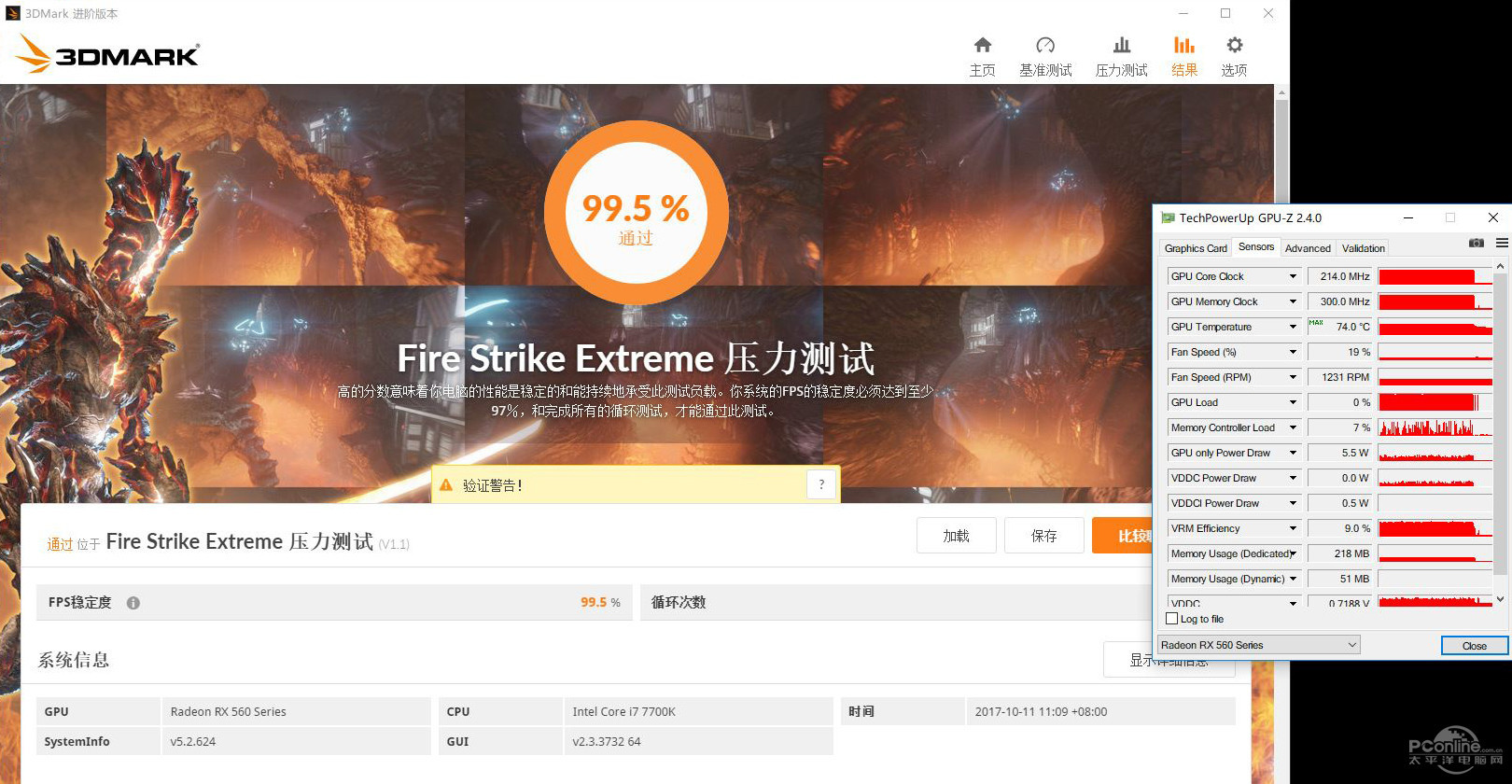
Test the stability of the graphics card using the current authoritative 3DMARK stress test, only 97% of the test is passed, and the sapphire RX560D Platinum OC pass with 99.5%, indicating that its stability is absolutely no problem. In addition, the full load temperature is also measured by a GPU-Z monitored sensor, which is 74°C. An ordinary number is not high.
â— full load noise test:
Here we use the noise meter to test the fan noise when running the 3DMark stress test on the graphics card.
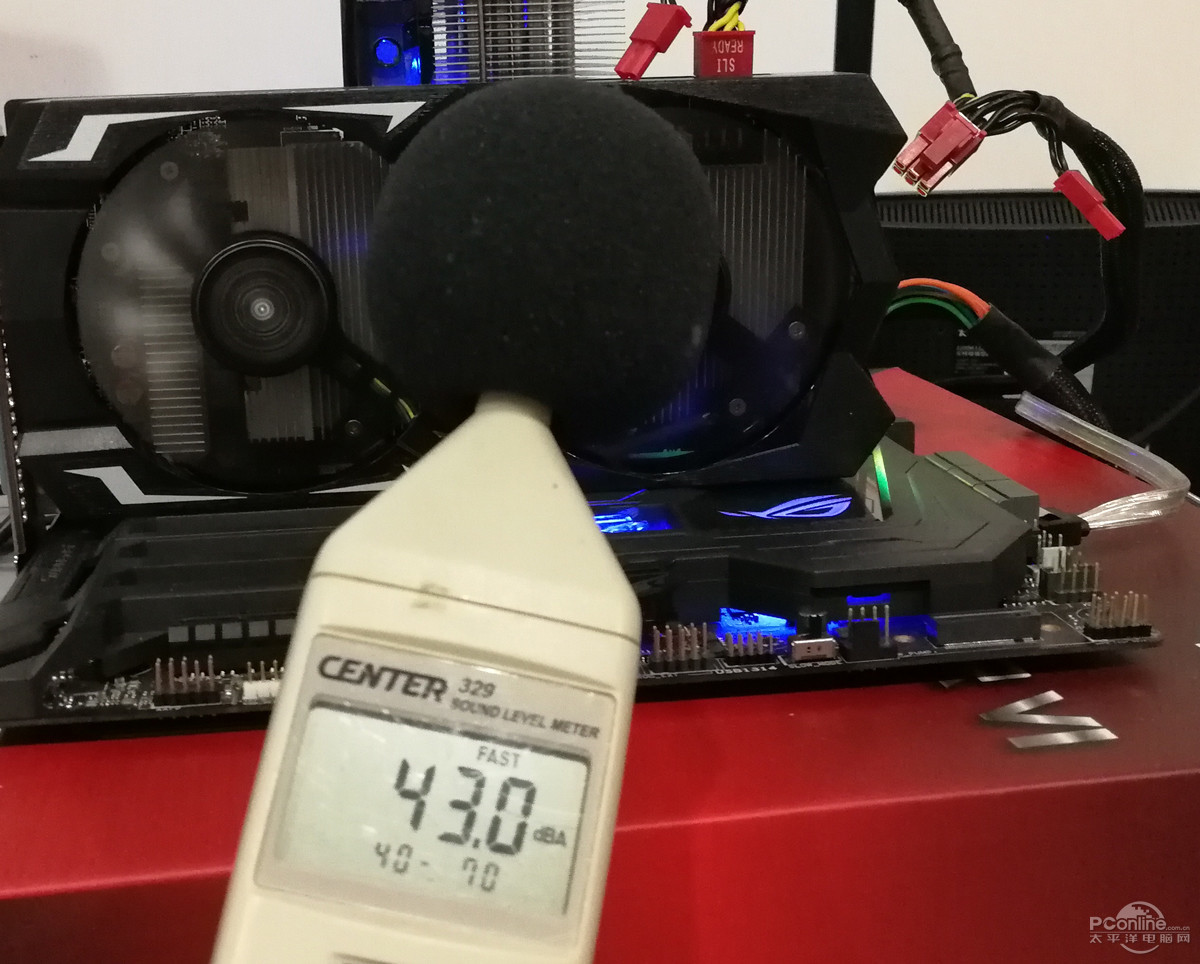
When the noise was stable, it was only 43 decibels, which was a very low noise in the video card. I liked it, indicating that the cooling system of the Sapphire Platinum Edition was designed very well.
â— PConline graphics ladder diagram
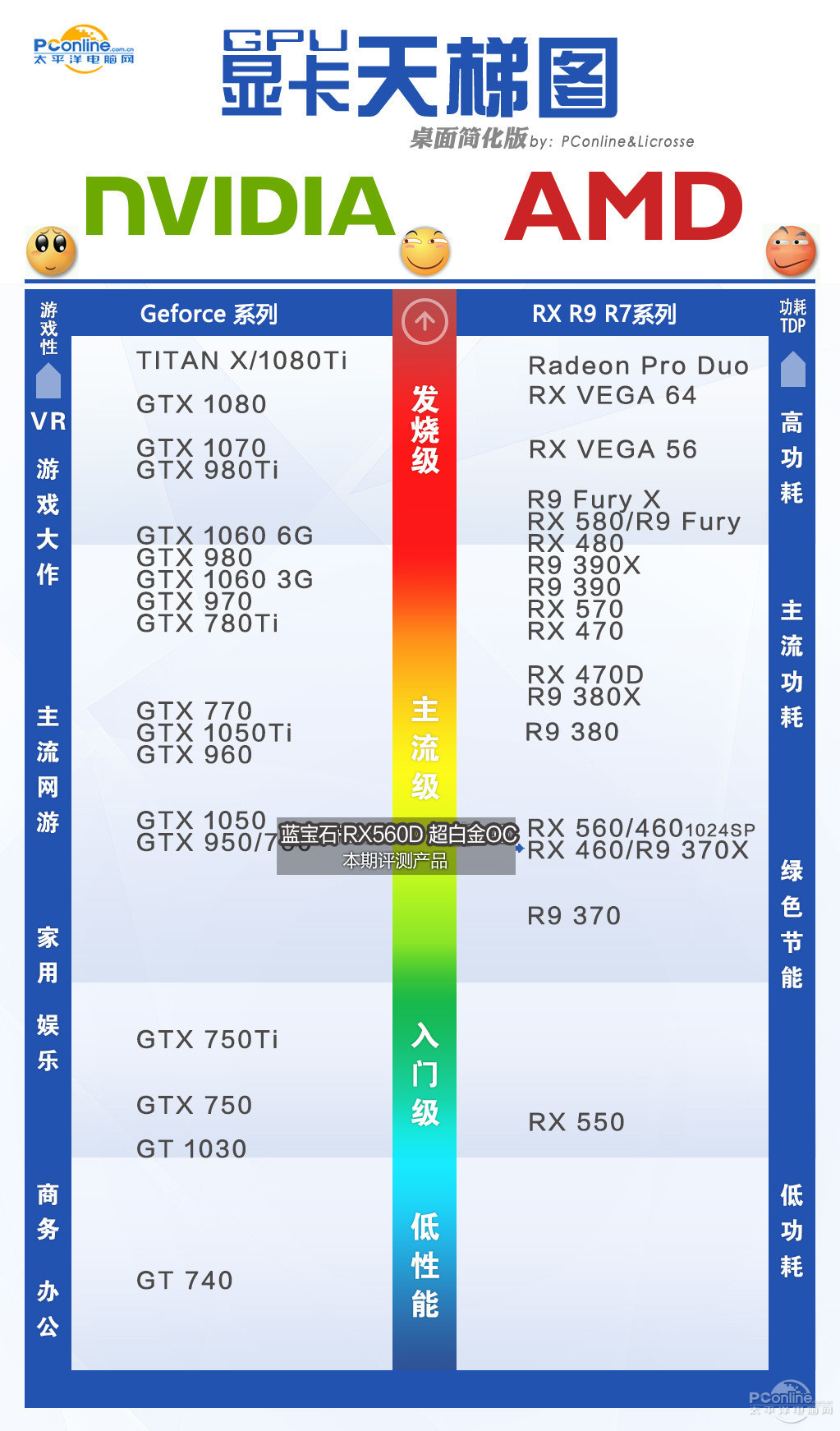
Ladder Diagram Description: Based on the test results, we placed the sapphire RX560D Platinum Edition OC close to the RX460.
PConline evaluation room summary:
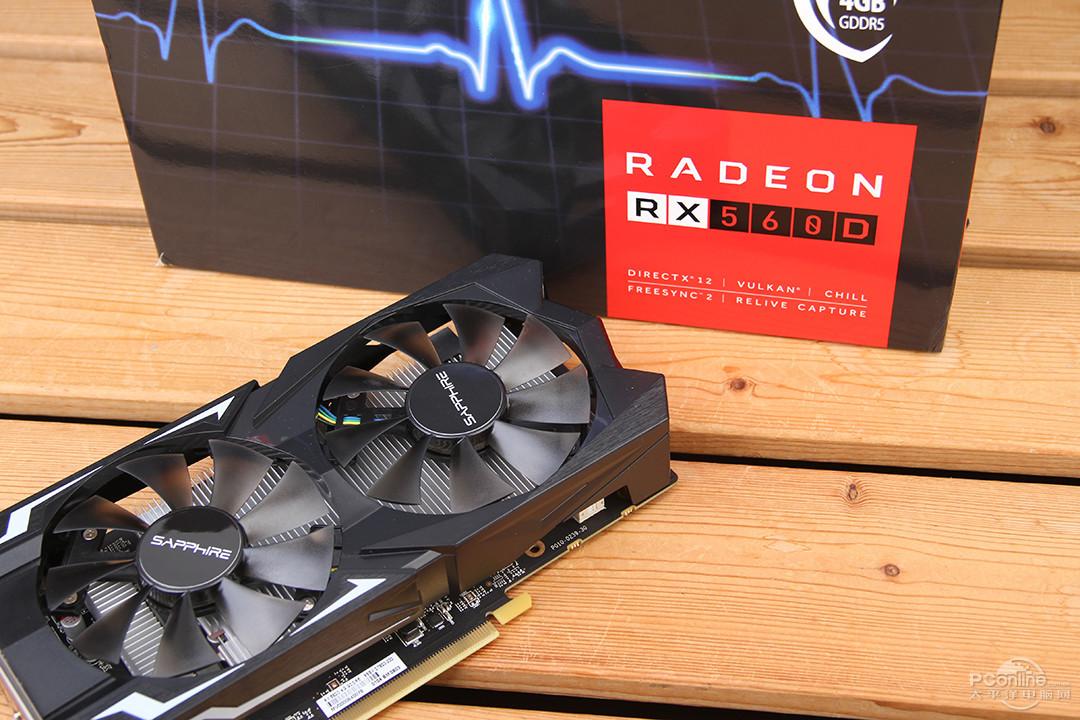
Sapphire RX560D 4G D5 Platinum OC (75W) Image Review Offer Parameter Overview
In fact, the performance of the RX460 is very similar to the previous generation, because the core size is exactly the same, the difference is in the frequency, but the actual application of even a little higher frequency is not obvious.
The positioning of the video card is also very clear, if you do not have a separate graphics card, then buy an upgrade is still very good. However, if you originally use GTX950 or above graphics card, then the upgrade is not obvious. However, compared with the GTX1050, the RX560D's memory capacity is even greater, and it can easily handle a lot of game scenarios.
Sapphire RX560D Platinum Edition OC price is slightly higher than other brands of RX560D, but after all, from Sapphire, quality, workmanship is indeed able to withstand the test.
Advantages and Disadvantages 1. Small changes in technology and slight improvements in efficiency2. Contrast that of GTX 1050 with advantages in memory and slightly higher prices than other brands
A Small Computer System Interface (SCSI) connector, also pounced as [scuzzy" connector, is used for physically connecting and transferring data between computers and peripheral devices.
SCSI is the small computer system interface, which is an independent processor standard used for the system level interface between computer and intelligent devices (hard disk, floppy, optical drive, printer, scanner, etc.). It is an intelligent universal interface standard, which has the function of communicating with various types of peripherals. SCSI uses the standard software interface of ASPI (SCSI programming interface) to make the driver communicate with the SCSI adapter installed inside the computer. SCSI interface is widely used in high-speed data transmission technology on minicomputers. SCSI interface has many advantages, such as wide application range, multitask, wide bandwidth, low CPU utilization, and hot plug.
SCSI connectors type and interfaces
Centronics 50-pin connector: The Centronics 50-pin connector was once the most widely used SCSI connector. An external connector only, the Centronics is a SCSI-1 connector that looks the same as the Centronics cable that attaches to a parallel port printer. The Centronics 50-pin cable comes in male and female styles, and gender changers and cable converters are commonly available. Although used on older SCSI devices and external drive enclosures, this interface is no longer heavily used, due to its slow speed and short cable lengths.
High-density 50-pin connector: The high-density 50-pin connector is used on scanners and Jaz drives. It is one of the more common SCSI connectors and is usually used to connect SCSI-2 devices. Both ends of the cable are usually 50-pin male, while the sockets on the host adapter and external devices are 50-pin female.
DB 25-pin connector: The DB 25-pin or D Sub 25 is by far the most widely used connector. This connector is used for parallel and serial printers in addition to the many other devices available. Both ends of the cable are usually 25-pin male, while the sockets on the host adapter and external devices are 25-pin female. This cable is almost always an external connector.
Note: DB-25 SCSI CABLES are not compatible with and should not be used as serial or printer cables; serial cables and printer cables should not be used or attached to DB-25 SCSI adapters. You can short out the SCSI host adapter or the motherboard by using the wrong cable. Marking cables is the best way to avoid this.
IDC50 connector: The IDC50 is the most common internal SCSI connector. It is very similar to the standard IDE internal ribbon cable. The IDC50 SCSI cable is considerably wider then an IDE ribbon cable; in fact, it is usually the widest standard internal cable in use. This is a standard SCSI-2 10MBps internal SCSI cable. Many low-end cables have only two or three connectors, allowing for one or two devices to be attached to the cable. Seven-device cables are available, though they are often expensive and require a large case, as the cables may be four or five feet long.
High-density 68-pin connector: The high-density 68-pin connector is the SCSI connector of choice for SCSI-3 host adapters and peripherals. There is an internal ribbon cable version that looks very similar to the IDC50 connector. Many low-end cables have only two or three connectors, allowing for one or two devices to be attached to the cable. Seven-device cables are available, though they are often very expensive and require a large case, as the cables may be three or more feet long. Both ends of the external cable are usually 68-pin male, while the sockets on the host adapter and external devices are 68-pin female.
SCA 80-pin Micro-Centronics connector: SCA stands for Single Connector Attachment, a type of disk drive connector that includes connection pins for the power cables as well as the data wires. A SCA connector uses an 80-pin plug and socket to connect peripherals. This connector combines power, data channel, and ID configuration for fast installation and removal. SCA connectors are typically found only on high-end SCSI hard disks. The SCA interface was designed to provide a standard connection for systems using drives that can be hot-swapped. SCA makes swapping SCSI hard drives much easier than with traditional SCSI cables, plugs, and sockets. An adapter enables SCA drives to fit into standard SCSI enclosures.
SCSI SFF 8482: Also called "4x internal" by some vendors. This is a connector with the same form factor as SATA with the addition of a "bump" to key it specifically for SAS. (SATA drives can be plugged into SAS controllers, but SAS drives will not function with a SATA controller; hence, the necessity for the key bump on the connector.) As the name says, it's meant to be used internally, i.e., inside the computer case.
SCSI SFF 8484: Also called "32-pin" or "MultiLane". This is a high density connector usually intended to plug into the motherboard, controller, or backplane itself. Cables with this connector on one end usually have four individual SFF 8482 connectors on the other.
Serial Attached SCSI SFF 8470: Also called "4x external" by some vendors. This is simply a version of the SFF 8484 that's meant to be used with external (i.e., not located within the case) drives.
Scsi Connector,Half Pitch Scsi Connectors,Scsi Lead Half Pitch Male,SCSI (SAS) Connectors,Female Scsi Connector,SCSI Connectors I/O Connectors,Manufacturers and Suppliers in China
ShenZhen Antenk Electronics Co,Ltd , https://www.antenkwire.com
